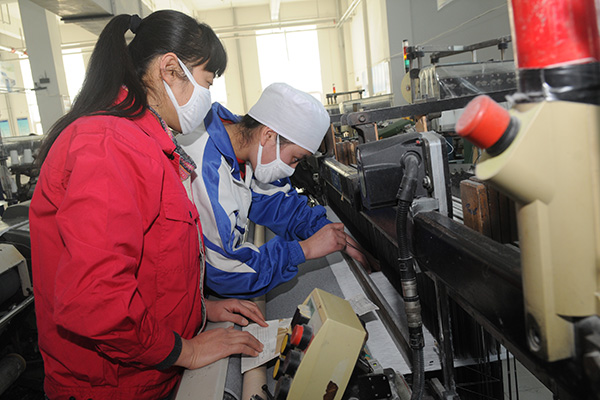 |
|
A student works alongside a teacher to learn about weaving at the Zichuan District Vocational Training Center in Zibo, Shandong province. [Photo provided to China Daily] |
Three decades ago, Chinese cities began turning rural land into industrial parks to attract foreign investors.
Today, a new kind of project is blooming in China's countryside: the vocational education park.
Cities around China are carving out tracts of land for school parks-dubbed "education factories"-designed to train hundreds of thousands of students.
Fueling their drive are generous government subsidies and targets to increase the number of skilled workers, part of Beijing's push to redirect China's economy away from its investment-led past toward a more innovative, high-tech future.
But the expansion comes even as many existing vocational schools are struggling to live up to their promise.
"You can build as much as you want, but unless you get good teachers, good curriculum and a system that assesses and rewards high performing schools with more resources, it's just going to be a waste of money," said Scott Rozelle, co-director of the Rural Education Action Program at Stanford University and the author of many papers on vocational education in China.
There is no question China needs to raise skill levels. Wayne Zhang, who runs a home decor products factory in northeastern China, said that finding skilled workers-in order to increase capacity or make more complex products-is increasingly hard. Of the 100 such staff he set out to hire last year, he has only been able to find 60.
As of 2010, just 24 percent of China's workforce had attended at least some upper secondary school, compared with an Organization for Economic Cooperation and Development average of 74 percent, according to a study published by the Freeman Spogli Institute for International Studies at Stanford University in February.
As the labor force shrinks and ages, China also needs to coax more productivity out of each worker. Worker training could help avoid the so-called "middle-income trap" and, in theory, narrow a widening income gap that threatens social stability.
Lanzhou, capital of Gansu province, reportedly expects to attract more than 30 schools and 150,000 students to its vocational park opening in 2017. Ganzhou, in southern Jiangxi province, has been reported to be building a vocational school district which hopes to have at least 10 schools and more than 100,000 students when it opens in 2018. Yunnan, Shandong and Hunan provinces all have vocational school parks.
And yet, many Chinese vocational schools already struggle to attract students. Vocational schools, almost all State-run, are usually high schools, although China is pushing to create more vocational universities.
But vocational education lacks the prestige of conventional high school. Many teachers have never worked in the industries they are preparing students to join.
